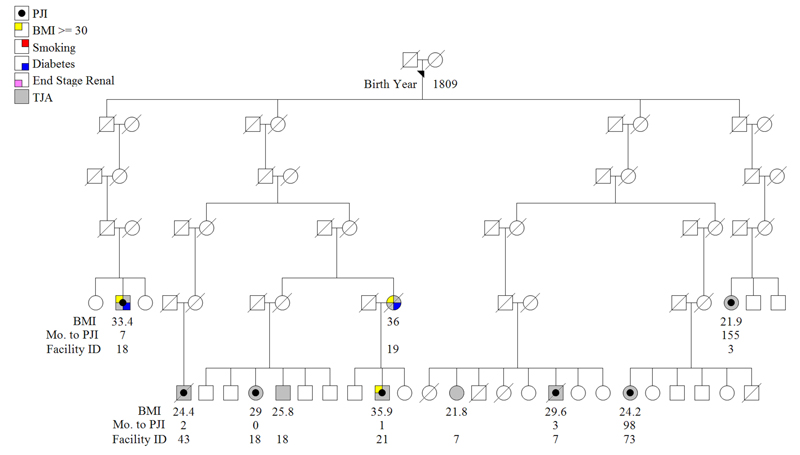By MIKE B. ANDERSON
Infections following total joint replacement have troubled the adult reconstruction orthopaedic sub-specialty since the introduction of the modern total joint arthroplasty procedures of the hip and knee in the mid twentieth century. This infection known as periprosthetic joint infection (PJI) affects approximately one to three percent of total joint arthroplasty (TJA) patients, but is responsible for the majority of revision surgeries. Revision surgery for PJI is a costly and arduous procedure. There is a clear need to develop better methods for identifying patients at higher risk of developing these infections .
A recent article published in the Journal of Bone and Joint Surgery, reports that a heritable predisposition to infection following total joint replacement may exist. This study was conducted by the Adult Reconstruction team at the University of Utah Orthopaedic Center in collaboration with the University of Utah’s Pedigree and Population Resource. Researchers included Mike B. Anderson, MSc, Karen Curtin, PhD, Jathine Wong, BS, Christopher E. Pelt, MD, Christopher L. Peters, MD, and Jeremy M. Gililland, MD.
The study looked at 66,985 total joint arthroplasty procedures of which 1,530 subsequently developed a PJI. The study identified over 100 families with a high frequency of infection following total joint replacement compared to the population average. For example, 13% of family members in the pedigree below experienced a PJI after having a joint replacement surgery of the hip or knee. After accounting for patient characteristics and comorbidities, familiality remained a risk factor for PJI.
The results of this study suggest that, yes, being at higher risk for infection following joint replacement surgery may indeed be linked to our inherited genes. Future research will focus on identifying the genes that may predispose a patient to a greater risk of infection and eventually discovering interventions to decrease the risk for all patients.
